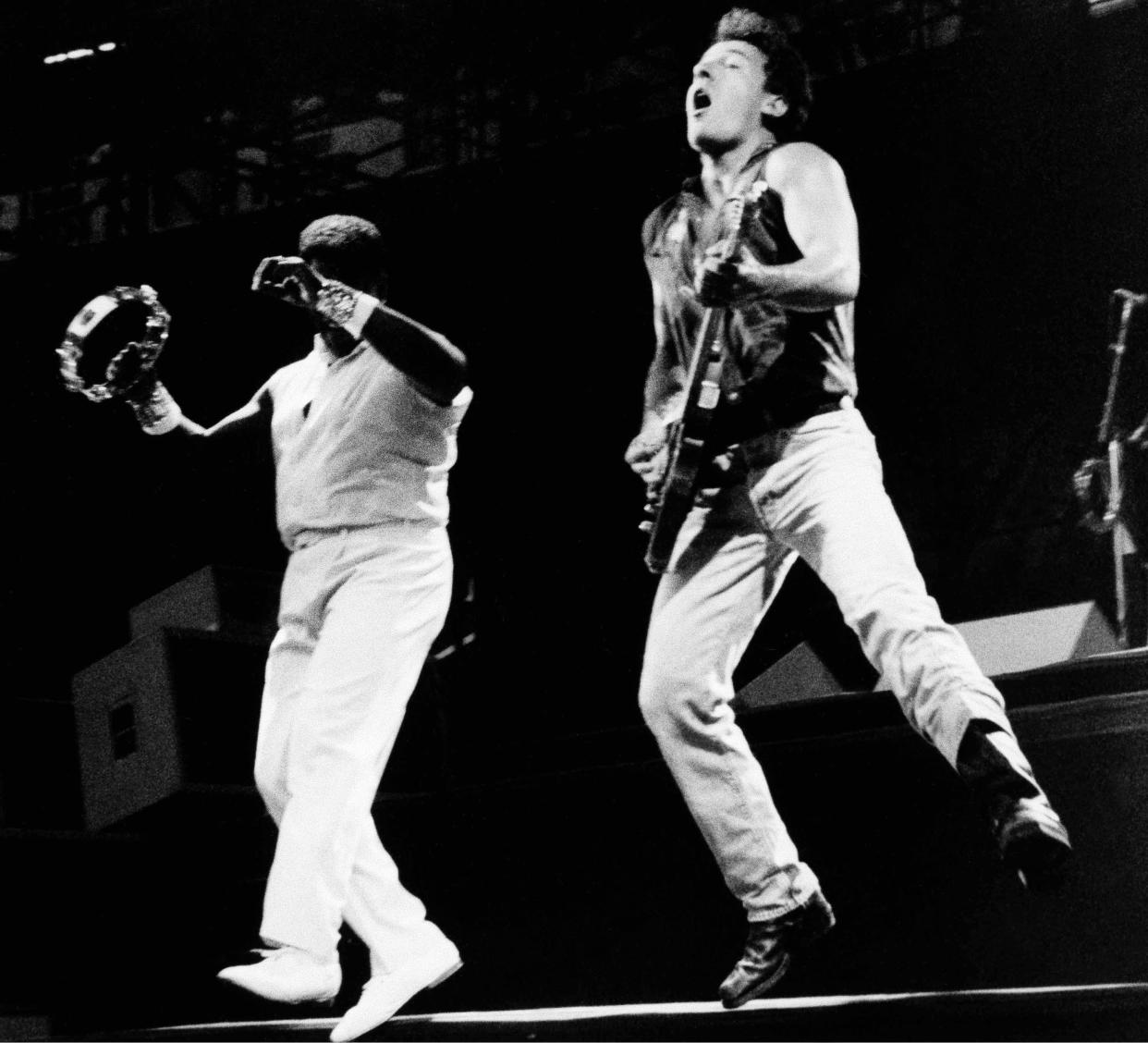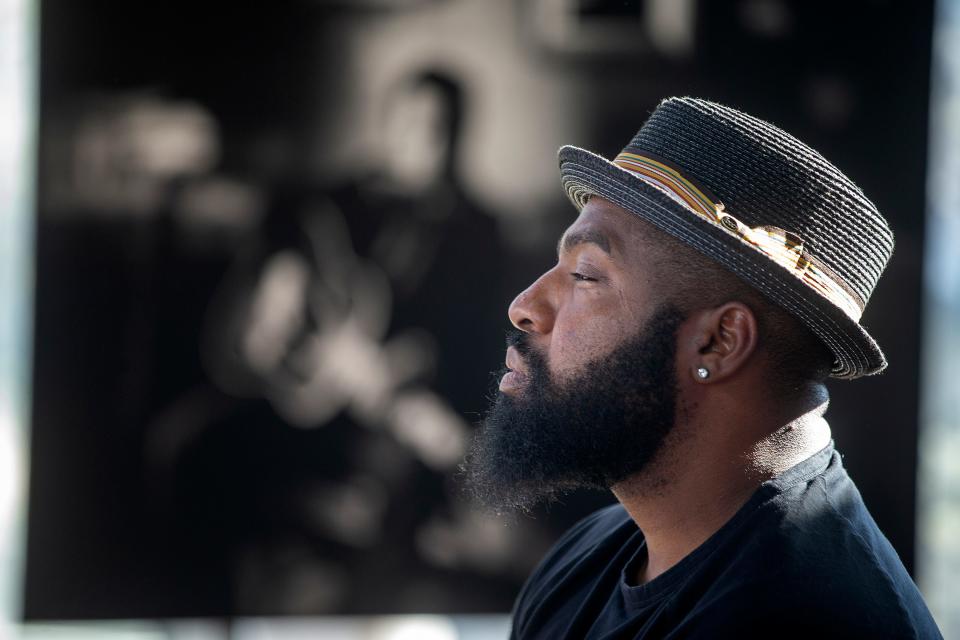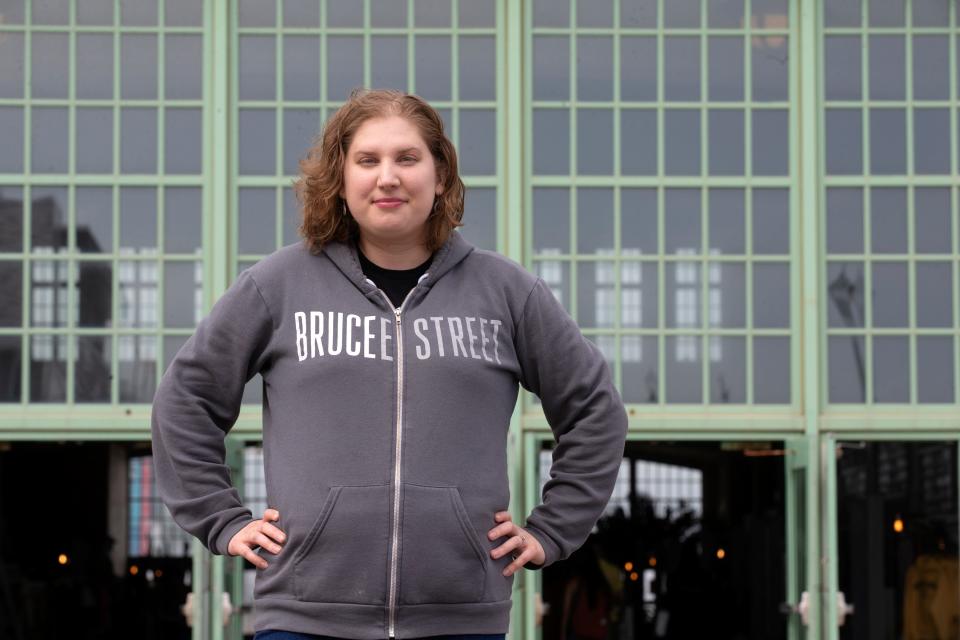Thunder Road: Born to Run opening song ‘filled with youth’

- Oops!Something went wrong.Please try again later.
- Oops!Something went wrong.Please try again later.
Mary’s dress “sways.”
More than 45 years after “Thunder Road” was released, a debate about one of its lyrics was resolved in July when Springsteen manager Jon Landau told The New Yorker that Mary's dress “sways,” not waves.
The interest in such a minute detail of the song speaks to the hold it's had on fans all these years.
“Thunder Road” still transfixes.
“That’s a story that all Americans — males and females, no matter what age you are — get,” said former Springsteen manager and “Born to Run” co-producer Mike Appel. “It gets them in the gut, it punches them right in the heart. Everybody says, 'Geez, it’s so American.' I see the beaches. I see the 'burned out Chevrolets.' Your graduation gown lies in rags at your feet. I see that. I see roses in the rain. ... It’s picturesque ... and it’s my favorite Bruce Springsteen song ... "
“Thunder Road” unfolds in waves, from the harmonica intro, which evokes sunset on a late summer day, to "the screen door slams.”
The pace of the track quickens as young lovers face an unknown fate riding out into the night, and a piano flourish suggests a physical, and emotional, union.
“I think why people attach to it so much is because it’s a song that’s filled with youth,” said Caroline Madden of Toms River, a film critic and author of “Springsteen as Soundtrack: The Sound of the Boss in Film and Television.”
“Bruce wrote it when he was really young, and the main characters are young — they have their whole lives ahead of them. You’re just so fully in whether Mary’s going to accept this romantic proposal and go off with him, whether or not they’re going to escape their small town, and I think that sense of possibility is why we are so infatuated with the song.”
Springsteen was 24 when he wrote most of the songs of “Born to Run” in a rented bungalow in the West End section of Long Branch. He has said that the line “maybe we ain’t that young anymore” refers to a collective moment of the times in the country after the Vietnam War.
“It’s about enjoying life and breaking out of the constant hamster wheel,” said Asbury Park musician Alexander Simone. “You got to break that cycle if you really want to be somebody and go somewhere and make a difference and reach the highest potential of yourself.”

The track went through several different versions before the final album track, said Brian Hiatt in his book “Bruce Springsteen: The Stories Behind the Songs.”
It was chosen to be the first song on “Born to Run.”
“The music sounds like an invitation,” said Springsteen on “VH1 Storytellers” in 2005. “Something is opening up to you.”
The piano coda ending recalls the piano intro, but elaborates on the theme. Appel was not happy with the ending initially. Too ornate, he said.

“I thought it was like Liberace,” Appel said. “I thought it was a little bit like Abba, something Abba would do, but I was wrong. Over the years it was a great juxtaposition, a lyrical juxtaposition, to the rural Americana against that pompous, poppy Abba, Ferrante and Teicher “Theme From 'The Apartment’ ” ... Liberace, kind of sugary, colorful ending. It hit me: 'Maybe that’s not rock ’n’ roll enough, maybe that’s too left of center.' But over the years I said to myself, 'You know, it’s so identifiable, and it’s so sweet and against everything he played. That juxtaposition is a great way to go out.”
“Thunder Road” is revered, considered by many to be Springsteen’s finest moment on record. It’s become something of a tradition in Asbury Park when Springsteen performs at the annual Light of Day festival to raise funds in the battle against Parkinson’s disease. The Boss closes the night with a solo acoustic “Thunder Road” at the Paramount Theatre — with 1,600 fans singing along.
"For me it was the whole line about how 'you can hide 'neath your covers and study your pain,' " Madden said. " ... It encouraged me not to wallow in sadness or any pain that I was experiencing in tough situations. It really inspired me to be like the narrators themselves and escape from the things that were making me down and do something better."
This article originally appeared on Asbury Park Press: Thunder Road | Behind Bruce Springsteen songs

